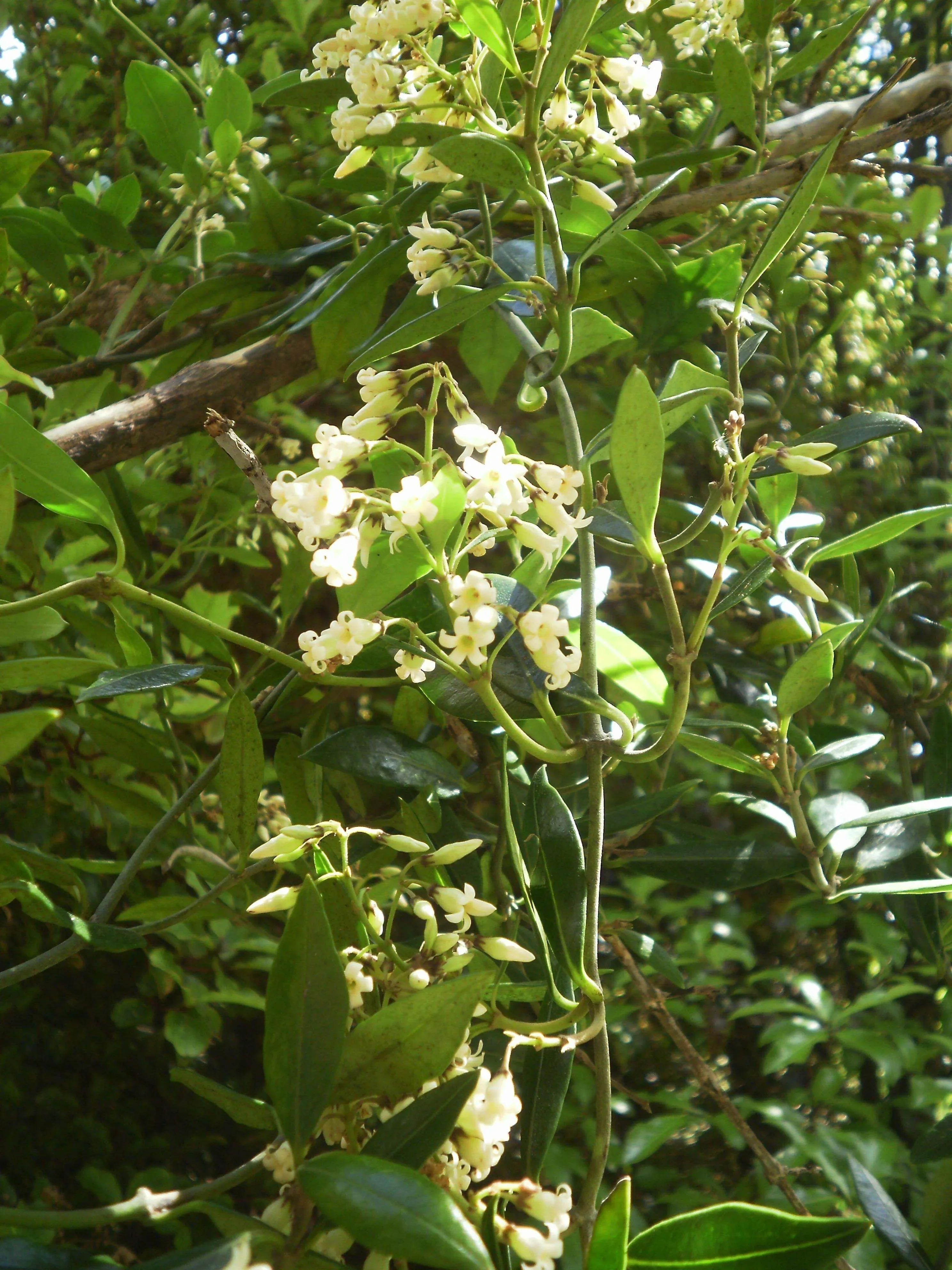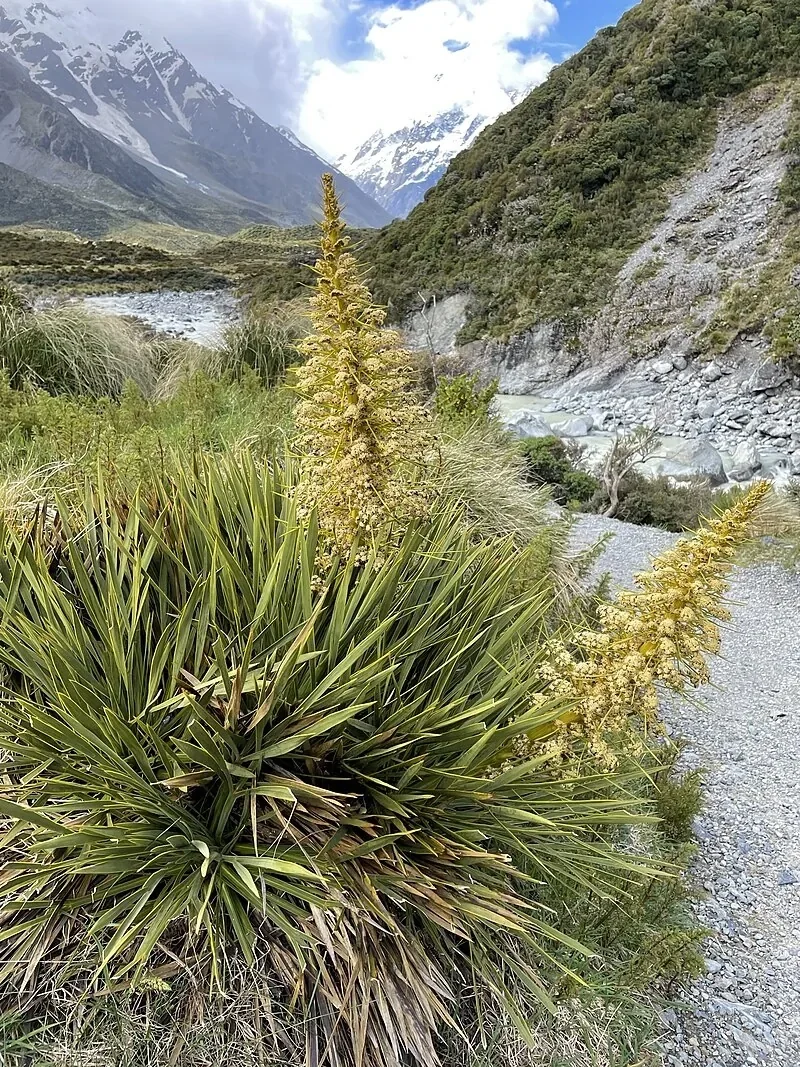
Kaihua
Parsonsia heterophylla
Introduction
Introduction Overview
Parsonsia heterophylla , commonly known as New Zealand Jasmine or Kaihua, is an elegant native climber that produces clusters of sweetly scented white flowers. This versatile vine shows remarkable variation in leaf shape throughout its life cycle and can climb to impressive heights in forest environments. Its strong s Parsonsia heterophylla native trees .

Plant Description
Botanical Features
Twining Cordage and Restoration
New Zealand jasmine ( Parsonsia heterophylla ) twines through forest margins, its scented flowers feeding insects and glossy pods releasing silky‑haired seed. Ethnobotanical notes mention flexible vines used occasionally as binding where supple material was close at hand. Today, eco‑sourced Parsonsia is woven into restoration plantings as living liane structure - linking shrub layers, providing cover for birds, and reconnecting bush edges with pollinator resources.
Kaihua ( Parsonsia heterophylla ), commonly known as New Zealand Jasmine, is a woody, evergreen climbing plant endemic to New Zealand. It can grow up to 10 meters tall, twining its stems around other plants or supports to reach sunlight. The species name "heterophylla" refers to its varied leaf forms, especially in its juvenile stages. Leaves on young plants can range from short, club-like to long, sword-shaped with wavy edges, and even a single specimen can display diverse leaf colours and structures. Mature plants typically have shorter and broader leaves, though they remain variable in shape. It produces clusters of small, scented, tubular flowers, usually white or cream, but occasionally yellow. These fragrant blooms appear from spring until autumn. The fruit is a long, narrow pod, about 15 cm long, that opens to release tufted seeds with long silken hairs, which are dispersed by wind.
Quick Facts
Quick Facts Overview
| Scientific Name | Parsonsia Heterophylla |
|---|---|
| Height | Up to 10 meters (33 ft) as a climber |
| Spread | Spreads several meters; twining vine that can cover trees and fences |
| Water Needs | Moderate; prefers moist, well-drained soils |
| Light | Full sun to partial shade |
| Frost Tolerance | Low to moderate; young plants need protection from frost |
| Salt Tolerance | Moderate; tolerates some coastal exposure |
| Growth Rate | Fast; vigorous climber in suitable conditions |
| Lifespan | Perennial; long-lived in forest settings |
Climate Best Suited to
Parsonsia is native to New Zealand and thrives in the country's diverse climate conditions. It adapts well to various regional climates throughout the country.
Regional Suitability
| City | Climate Suitability |
|---|---|
| Whangārei | Ideal |
| Auckland | Ideal |
| Hamilton | Ideal |
| Tauranga | Ideal |
| Rotorua | Ideal |
| Gisborne | Ideal |
| New Plymouth | Ideal |
| Napier | Ideal |
| Whanganui | Ideal |
| Palmerston North | Ideal |
| Wellington | Ideal |
| Nelson | Ideal |
| Christchurch | Ideal |
| Dunedin | Ideal |
| Invercargill | Ideal |
Natural Habitat
Natural Habitat Overview
Parsonsia is naturally found in specific habitats throughout New Zealand. Understanding its natural environment helps in providing appropriate growing conditions in cultivation.
Plant Conservation
Conservation
Parsonsia heterophylla , also known as New Zealand jasmine or kaihua, is a climbing plant endemic to New Zealand. It is found throughout the North Island, South Island, Three Kings Islands, and Stewart Island, commonly in lowland or low montane forests, particularly at forest margins and clearings in coastal scrub patches. Regarding its conservation status, Parsonsia heterophylla is currently classified as "Not Threatened" by the Department of Conservation and the NZPCN. This status has been consistent in assessments from 2004, 2009, 2012, 2017, and 2023. While generally not threatened, it can be of interest to browsing possums, which can lead to a "Threatened / Nationally Endangered" status in specific areas, though this appears to be a localized concern. Conservation efforts for native plants in New Zealand often involve promoting their growth and removing invasive species. Parsonsia heterophylla can be used in gardens as a native climber to help keep back pest plants like Japanese honeysuckle, which can smother native vegetation.
Soil Requirements
Parsonsia prefers well-draining soil with good organic content. It can adapt to various soil types but performs best in loamy or sandy soils.
Water Needs
Parsonsia requires moderate watering, especially during establishment. Once established , it becomes more drought-tolerant.
Light Requirements
Parsonsia grows best in full sun to partial shade, depending on the specific species and local climate conditions.
Temperature
Parsonsia is well-adapted to New Zealand's temperate climate and can tolerate both warm summers and cool winters.
Planting Guide
When to Plant
The best time to plant Parsonsia is during spring or autumn when soil temperatures are moderate and rainfall is reliable.
How to Plant
Dig a hole twice the width of the root ball and slightly deeper. Place Parsonsia in the hole, backfill with soil, and water thoroughly. Mulch around the base to retain moisture.
Ecological Role
Wildlife Interactions
This plant plays an important ecological role in New Zealand's native ecosystems. It provides habitat and food for native wildlife and contributes to ecosystem health and biodiversity.
Uses and Applications
Parsonsia has various practical and ornamental uses. From traditional Māori applications to modern landscaping, this versatile plant serves multiple purposes.
Traditional Uses
Historically, Parsonsia was used by Māori for medicinal purposes, food, and cultural practices. These traditional uses reflect the deep knowledge of native plants.
Landscaping Uses
Landscaping Uses Overview
This plant is highly valued in landscaping for its aesthetic appeal and practical benefits. It can be used in various garden styles and landscape applications.
Seasonal Care
Spring
Spring is the ideal time to plant Parsonsia as the soil warms and new growth begins. Water regularly to establish roots and apply a light mulch to retain moisture.
Summer
During summer , Parsonsia may require additional watering during dry spells. Monitor for pests and provide shade if needed in hot climates.
Autumn
Autumn is perfect for transplanting Parsonsia as the cooler temperatures reduce stress. Reduce watering as growth slows.
Winter
Winter care for Parsonsia involves minimal maintenance. Protect from severe frosts if necessary and avoid overwatering.
- Plant in well-drained soil
- Apply light mulch
- Water regularly to establish roots
- Monitor for drought stress
- Provide shade in hot climates
- Check for pest infestations
- Transplant established plants
- Reduce watering as growth slows
- Collect seeds for propagation
- Protect from severe frosts
- Avoid overwatering
- Minimal maintenance required
Pruning
Pruning Techniques
- Prune after flowering to control size and shape
- Remove dead or tangled stems as needed
Regular pruning maintains plant health and desired shape. Remove dead , damaged, or crossing branches to improve air circulation.
How to Grow Kaihua
Kaihua, also known as New Zealand Jasmine, is an elegant native climber that produces clusters of sweetly scented white flowers. This versatile vine shows remarkable variation in leaf shape throughout its life cycle and can climb to impressive heights in forest environments. Its strong twining stems make it an excellent choice for covering trellises, fences, or as a groundcover in challenging environments. Kaihua is a resilient and ecologically important plant that adds unique texture and character to any landscape, showcasing the adaptability of New Zealand's native flora. Understanding its propagation methods is key to successfully growing this delightful species.
From Seed
Propagating Kaihua from fresh seed is a viable method, though germination can be slow and may require stratification. Collect ripe seeds in late autumn or early winter. Clean the seeds thoroughly to remove any fleshy pulp. Sow the seeds in a tray filled with a well-draining seed-raising mix, lightly covering them. The seeds typically require a period of cold stratification (e.g., refrigerate for 2-3 months) to break dormancy. Maintain consistent moisture in the seed tray and keep it in a warm, sheltered location. Germination can take several weeks to months after stratification. Once seedlings have developed a few true leaves, they can be potted into individual containers and grown in a sheltered environment before planting out.
From Cuttings
Semi-hardwood cuttings are a reliable and efficient method for propagating Kaihua, ensuring that new plants retain the exact characteristics of the parent. Take 10-15 cm cuttings from healthy, semi-hardwood stems in late summer or early autumn. Remove the lower leaves and dip the cut end in a rooting hormone. Insert the cuttings into a well-draining propagation mix (e.g., sand and perlite). Keep the cuttings in a warm, humid environment, out of direct sunlight, perhaps under a plastic dome or in a propagator. Rooting typically occurs within 8-12 weeks. Once rooted, the new plants can be potted on and grown in a sheltered environment until they are ready for planting.
Pests and Diseases
Common Pests
Parsonsia is generally resistant to most pests due to its native adaptations. However, it may occasionally be affected by common garden pests such as aphids or scale insects.
Disease Prevention
To prevent diseases, ensure good air circulation around Parsonsia and avoid overwatering. Remove any diseased plant material promptly to prevent spread.
Cultural Significance
Cultural Importance
Māori Uses and Knowledge
Kaihua/parsonsia was traditionally used for lashings and practical bindings; its sweet-scented flowers were tied to bird perches as lures. Today it is valued in restoration for weaving through forest margins and supporting pollinators.
Parsonsia heterophylla , also known as New Zealand Jasmine or Kaihua, holds cultural significance primarily for the Māori people of New Zealand. The flowers of P. heterophylla were historically used as a lure, bound to the perches of bird-traps during hunting. Additionally, the vines were utilized for practical purposes such as tying up boundaries and fences. This climbing plant is endemic to New Zealand and is found across the North Island, South Island, Three Kings Islands, and Stewart Island. Its Māori name is Kaihua.
Bonus Tip
Expert Growing Advice
The scientific name "heterophylla" means "varied leaves," aptly describing the diverse leaf shapes and colours that can appear on a single plant, especially in its juvenile stages. These leaves can range from small and round to long and sword-shaped.







